Step Ups Exercise – How to do Weighted Bench Step-Ups with Dumbbells

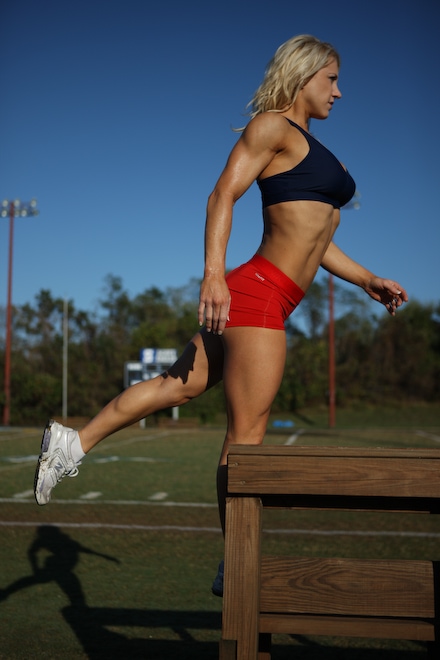
Are you ready to step up your fitness game? Look no further than the step-up exercise! Bench step ups are a simple yet effective movement targets your glutes, quads, and hamstrings, and can be done with or without weights.
How to do the Bench Step Ups Exercise:
Here is my step by step guide to perform the step ups exercise that will target your glutes, along with my favorite tips to help you achieve proper step-up form.
- Begin with a study surface to step up on to. The surface should ideally be about knee height although to make the step up exercise more challenging you can choose a higher surface. A traditional exercise bench is often a good choice, but you can really use anything that will hold your weight without shifting or falling.
- Standing in front of the surface with your arms down at your sides, chest lifted, and head up. You want your feet to be about shoulder width apart as you start the step up exercise.
- Step one foot up on to the bench placing that for squarely with your foot straight and heel down. Engage your core and keep your chest up.
- Push from your heel through your quads and step your body up placing your weight into the elevated foot. Keep your knee in line with your body and do not allow it to collapse out.
- At the top of the step up exercise, give an extra squeeze through your glute as you stand up tall allowing the back leg to elevate slightly away from the bench.
- In a controlled manner, step the foot behind back down to the ground, shifting your weight into the base leg and then bring the top foot down to the starting position.
Tips for proper form on the bench step ups exercise:
While unweighted and even weighted bench step ups exercises are not complicated movements, there are several things to consider to help you do the step ups correctly and with good form.
First, be sure that you keep your spine straight, shoulders square, and abs tight throughout the step up exercise. Avoid leaning forward to your hips or allowing your shoulders and chest to drop down. I like to choose a spot across the room to focus on that is just above my gaze line at the beginning of the step up to help keep my head lifted and use proper form throughout the step up exercise.
Keep your foot flat on the elevated bench and press firmly allowing the energy to transfer up your leg, through the quadriceps, and into the glutes. Do not lift up onto your toes at any point with the foot that is on the bench throughout the bench step up exercise.
Finally, you are better to take step-up exercises controlled and steady really allowing your legs to do the work instead of bouncing or using momentum to propel yourself to the top.
With proper step up form in mind, you can add this awesome leg and glute exercise to your leg day in a safe but challenging way!
Step Ups with Weight
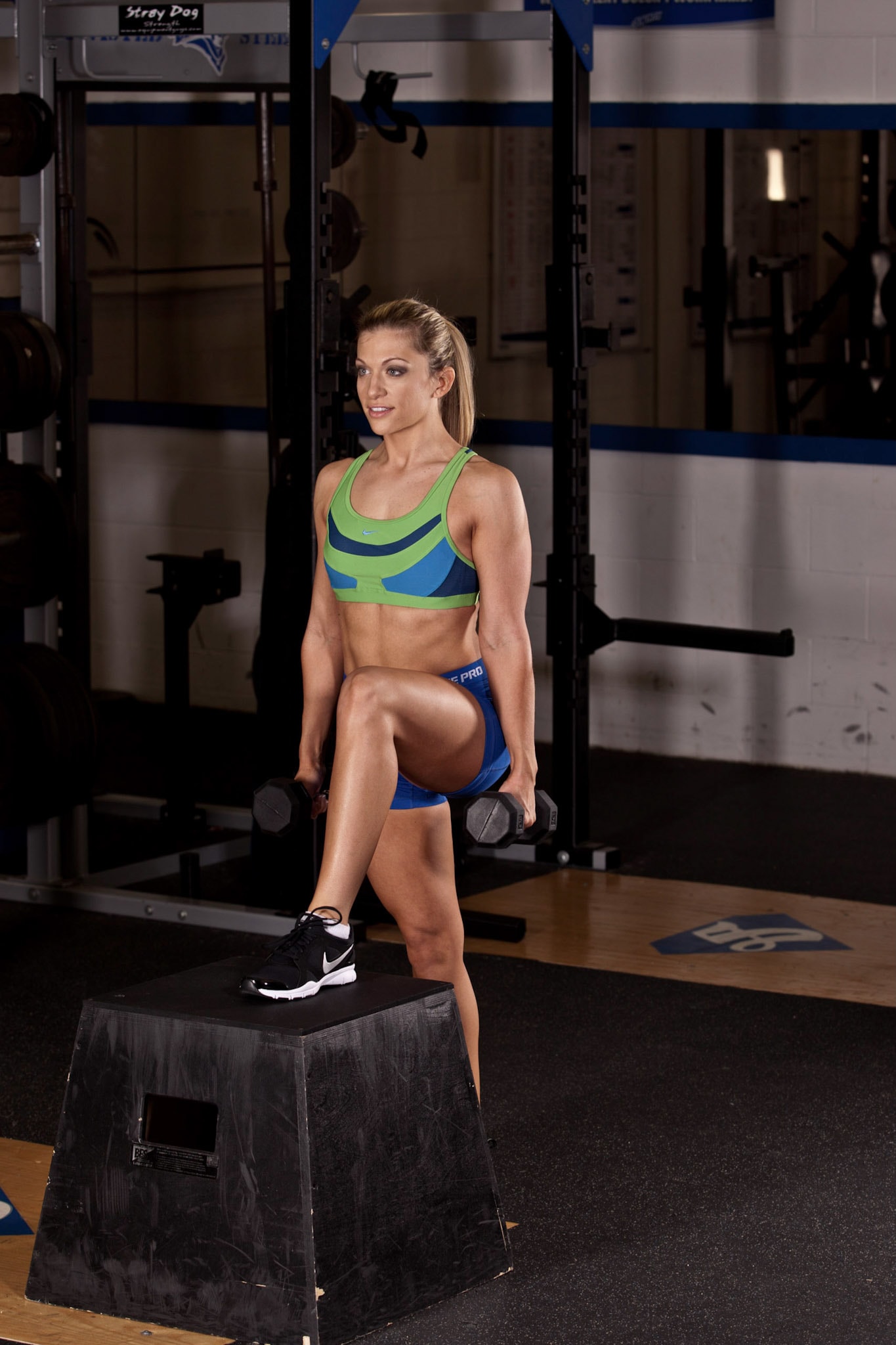
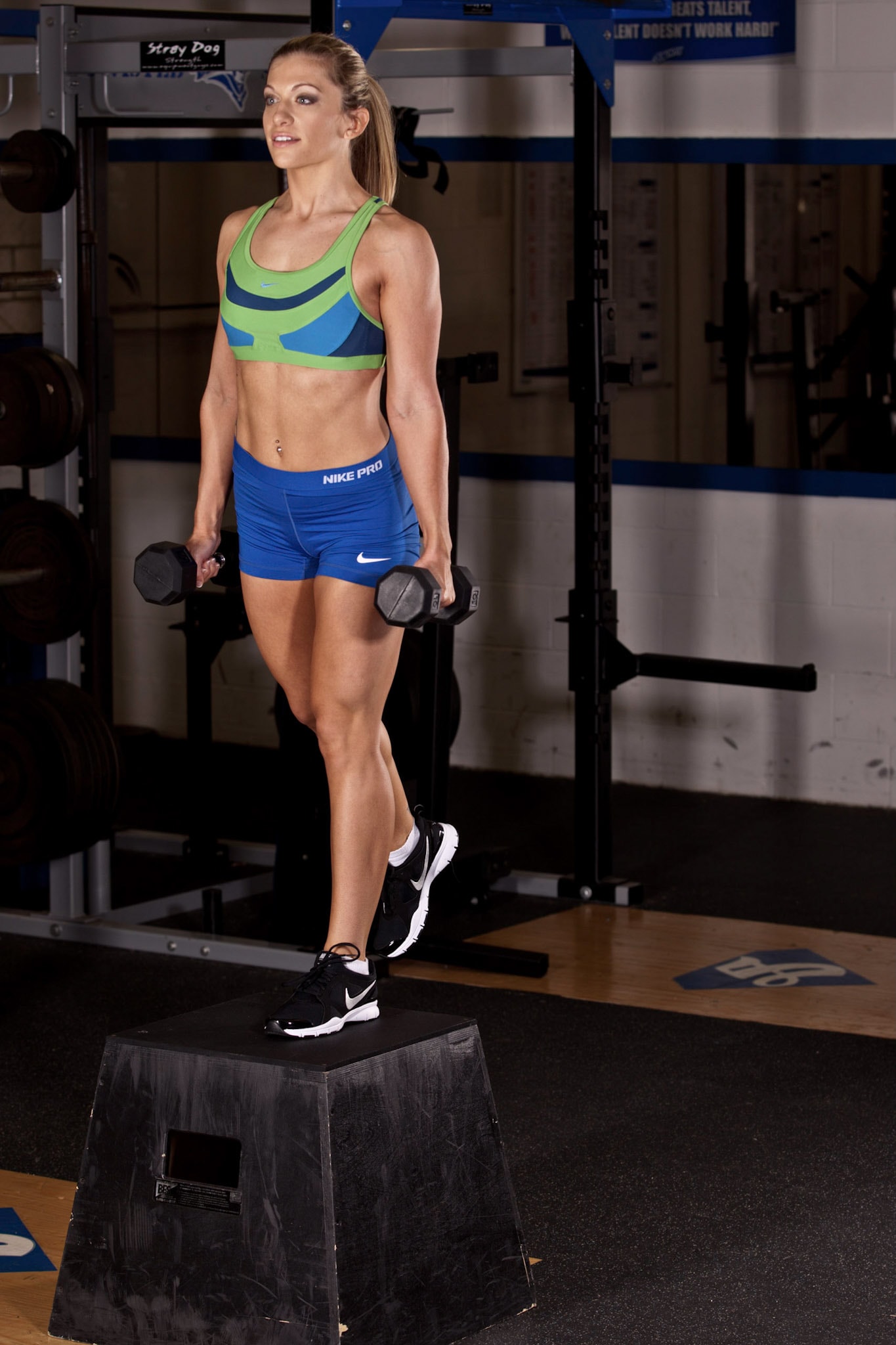
If you are ready for a real challenge, step ups with weight like dumbbells are a great way to take the basic step up exercise to a new level! Doing a step up exercise to a bench with dumbbells can provide additional benefits compared to just using bodyweight. Adding dumbbells to the step up will increase the resistance, which challenges your muscles to work harder and promotes strength gains.
What are step ups exercises good for?
If you are looking to increase your strength in the lower body, round out your glutes, and improve your definition and leg tone, weighted step ups with dumbbells should be a part of your leg workout. This can be especially beneficial for those looking to build lower body strength, as the step up exercise primarily targets the quads, glutes, and hamstrings. Additionally, the use of dumbbells can improve overall balance and stability, as you must maintain proper form while holding the weights. Overall, incorporating dumbbells into your step up exercise can help you achieve greater muscle growth, strength gains, and overall fitness results.
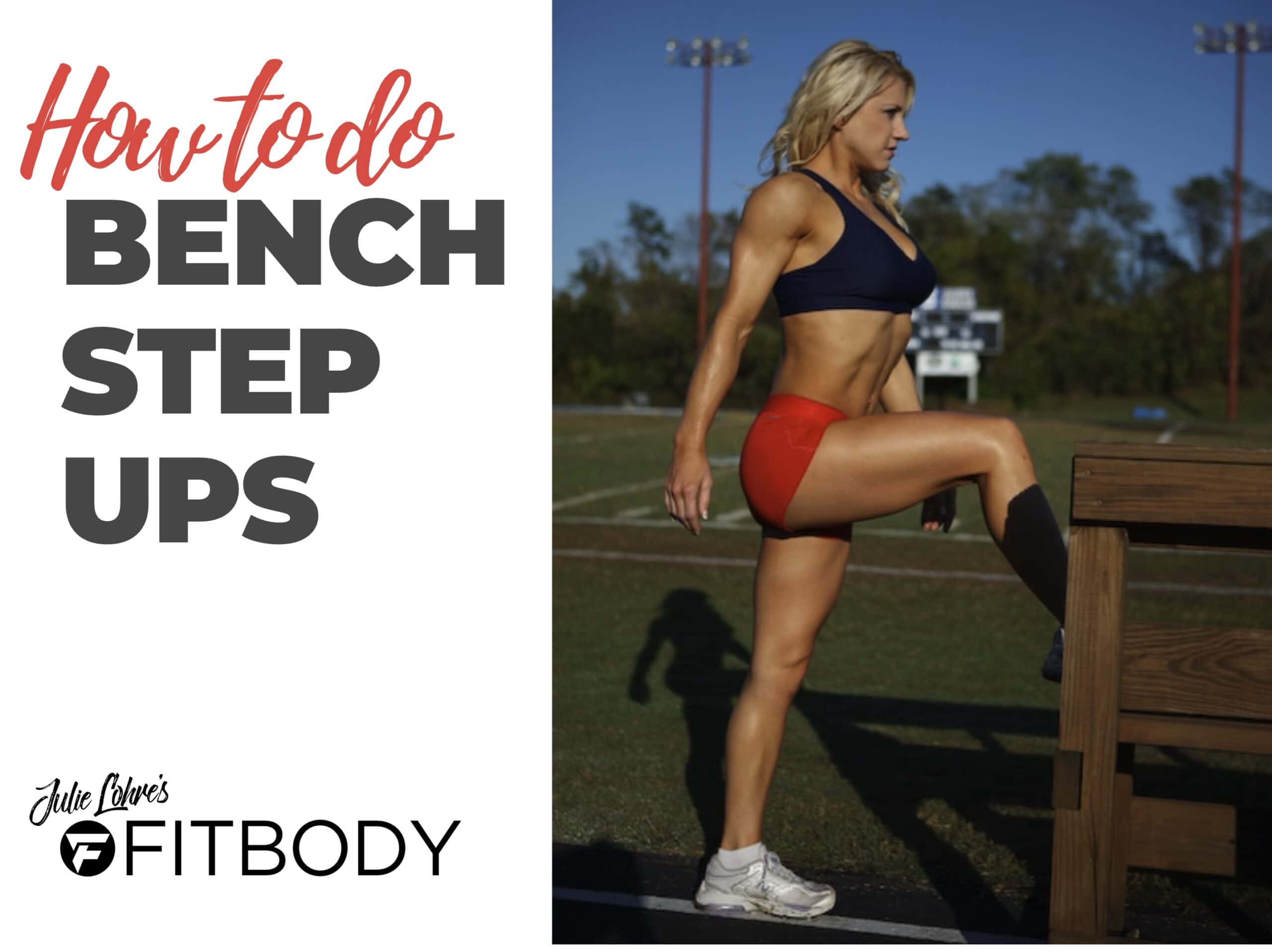
What muscles do the step ups exercise work?
A step up exercise primarily targets the lower body muscles, particularly the quadriceps, glutes, and hamstrings. The quadriceps are the muscles located on the front of the thigh and are responsible for extending the knee. The glutes are the muscles of the buttocks and are responsible for hip extension, while the hamstrings are the muscles located on the back of the thigh and are responsible for hip extension and knee flexion.
Targeting these muscles is important because they play a crucial role in functional movement and athletic performance. Strong quadriceps are essential for activities such as walking, running, jumping, and climbing stairs. Strong glutes and hamstrings are important for explosive movements such as sprinting, jumping, and changing direction quickly.
Incorporating step up exercises into your workout routine can help you develop stronger and more powerful lower body muscles, which can improve your athletic performance and overall physical fitness. Additionally, stronger lower body muscles can also help reduce the risk of injury during physical activity and daily life.
So why not give the step-up exercise a try? It’s a great way to add variety to your workout routine and target those hard-to-reach muscles. Plus, with or without weights, you’ll be able to step up to the challenge and crush your fitness goals in no time.
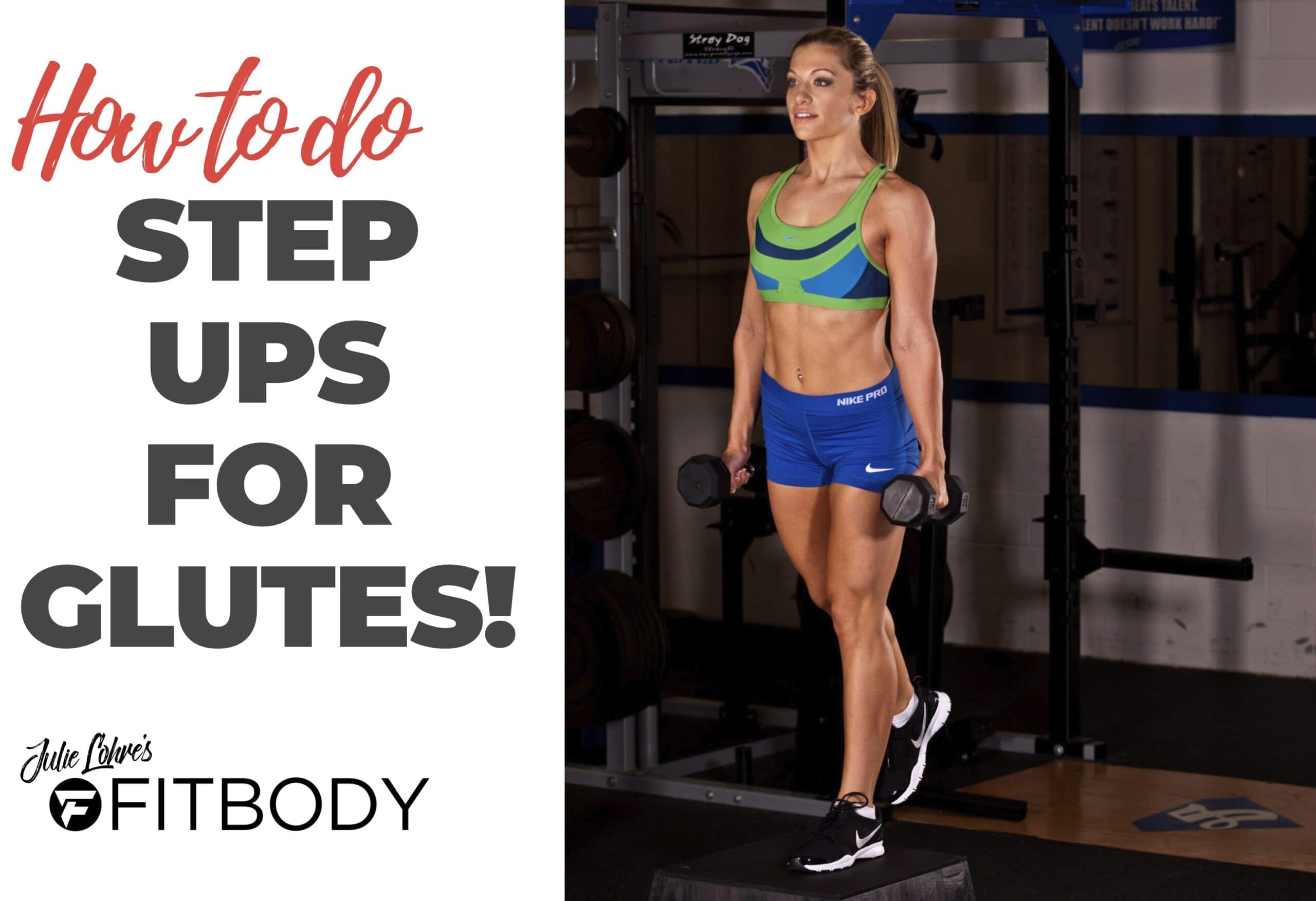
Why are step ups good for glutes in particular?
Step-ups are particularly effective for glute development due to several scientific reasons:
- Muscle Activation: When doing step ups for glutes, the gluteus maximus – the largest muscle in the buttocks – is heavily engaged. This muscle is responsible for hip extension, a primary movement in step-ups. When you step onto an elevated platform, your hip extends, which requires significant work from the glutes.
- Range of Motion: Step-ups for glutes involve a large range of motion, especially when a higher platform is used. This increased range of motion forces the glutes to work through a longer stretch, which can lead to greater muscle fiber recruitment and, consequently, better muscle development.
- Unilateral Exercise: Since step-ups are a unilateral exercise (working one leg at a time), they can help address muscle imbalances between the left and right sides of the body. Unilateral exercises often require more stabilization, which engages the gluteal muscles more intensely.
- Functional Movement: Step-ups mimic natural movements like walking and climbing stairs. This functional aspect means that the exercise not only strengthens the glutes but also improves their functional performance in daily activities.
- Progressive Overload: Like other resistance exercises, step-ups for glutes can be progressively overloaded by increasing the height of the step, adding weights, or increasing repetitions. This progressive overload is crucial for continuous muscle growth and development, particularly in the glutes.
- Compound Movement: Step-ups are a compound exercise, meaning they engage multiple joints and muscle groups. While the glutes are the primary movers, the hamstrings and quadriceps also play a significant role, making this exercise efficient for overall lower body development.
These factors contribute to why step-ups are a particularly effective exercise for targeting and strengthening the gluteal muscles.
Find out more about Online Personal Training with Julie

